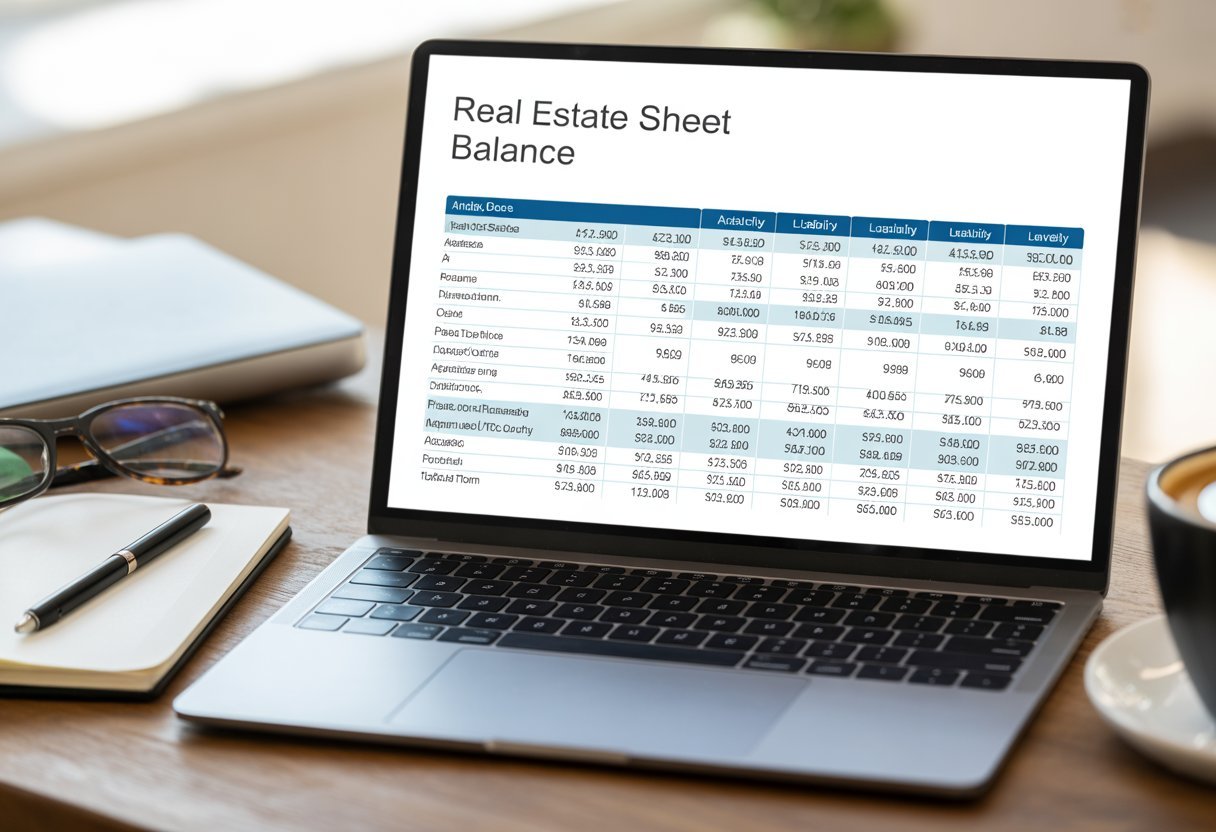Knowing exactly when to record rental income can make the difference between accurate financial statements and costly compliance mistakes. Whether you manage a single rental property or oversee multiple leases, recognizing rental income at the right time is crucial for both accounting clarity and meeting tax requirements. If you’re unsure of the details, you’re not alone—many property owners and accountants have questions about the best practices for rental revenue recognition.
The rules can seem complex, but clear guidelines exist to help you determine when rental income is considered earned and should be reported. For example, under U.S. tax law, rental income is typically recognized when it is received, while accounting standards may require you to recognize it when it is earned—even if the payment arrives at a different time.
Understanding these distinctions helps ensure your records are accurate and your obligations to the IRS and other authorities are met. For deeper insights, you can review IRS rental income and expenses information at Rental income and expenses – Real estate tax tips and explore best practices at Accounting for Rental Revenue: Best Practices and Common Pitfalls.
Key Takeaways
- Rental income recognition depends on specific timing and rules.
- Consistent methods are essential for compliance and accurate reporting.
- Common questions and practical tips will help you make informed decisions.
Fundamentals of Rental Income Recognition
Recording rental income accurately is central to producing reliable financial reports and complying with accounting standards. You need to understand the core concepts, principles guiding recognition, and the details within lease agreements to determine when and how to recognize rental income.
Key Concepts and Definitions
Rental income refers to payments you receive from tenants in return for the right to use a property or asset under a lease agreement. This includes commercial, residential, and even equipment leases.
Important terms include lessor (the property owner), lessee (the tenant), and lease term (the contractual duration of the lease). Rental income recognition focuses on when you record these payments as revenue in your financial statements.
Two main lease types impact how you record income—operating leases and finance leases. With operating leases, the property remains on your balance sheet, while finance leases transfer most risks and rewards to the lessee.
Revenue Recognition Principles
Timing is critical in recognizing rental income. Under accounting standards such as GAAP and IFRS, you generally recognize rental income evenly over the lease term using the straight-line method. This means you record revenue at a consistent rate, not just when cash is received, regardless of how payments are structured.
Adjustments may be needed if incentives, rent-free periods, or escalating rentals are included in the lease. For example, if there is a free rent period at the start, you will still recognize total expected lease income ratably over the full lease period, not just during payment months.
Compliance with global standards like IFRS 16 or ASC 842 ensures revenue is matched with the period in which the income is earned. You can review more about lessor accounting under IFRS 16.
Lease Agreements and Classification
Your lease agreements determine the classification between operating and finance leases, shaping when and how you record income. Operating leases require you to recognize rental revenue throughout the lease term, not just at payment intervals.
Key details to review include the lease start and end dates, payment schedule, renewal options, and rent escalation clauses. These elements directly impact the timing of income recognition.
Proper lease classification is not just a formality—it dictates the accounting treatment on your financial statements. For example, under an operating lease, all rental income is recorded as it accrues, while a finance lease may recognize the income upfront depending on the terms. Understanding these contract terms and the applicable accounting framework is essential for getting your rental income recognition right.
Accounting Methods and Compliance

Rental income recognition depends on the accounting methods you use, the structure of the lease, and the standards that apply to your business. Precise classification ensures the correct timing for income recognition and affects how rental payments appear in financial statements.
Accrual and Deferral Accounting
Accrual accounting requires you to recognize rental income when it is earned, regardless of when payment is received. This method matches rental revenue with the period it relates to, ensuring income reflects the actual usage of the property.
Deferral accounting involves delaying the recognition of income or expenses to a future period. For example, prepaid rent is recorded as a liability (deferred income) until the rental period occurs. Similarly, rent receivable represents income earned but not yet received.
Many businesses prefer the accrual method for better alignment of revenue with lease agreements, offering a clearer picture of actual financial performance. However, smaller operations may use the cash basis, recording income when cash is received, rather than when earned. Cash versus accrual has implications for timing of income reporting and tax obligations. Learn more about accrual and cash basis practices from this detailed real estate rental accounting guide.
Straight-Line Rent and Deferred Rent
Straight-line rent accounting requires you to spread total lease payments evenly over the life of a lease, as mandated by most GAAP and IFRS rules. Even if a lease has increasing or decreasing rent payments, your financial statements must reflect constant periodic rental revenue each period.
Any differences between the actual rent collected and the recognized straight-line rent are recorded as deferred rent on your balance sheet. Over time, deferred rent balances out as the difference between lease payments and recognized income reverses.
Use straight-line rent to smooth income and avoid spikes caused by rent-free periods, rent escalation clauses, or variable payment schedules. This approach applies to both operating and financing leases and directly impacts reported earnings and the calculation of related lease receivables or liabilities. For a deeper explanation, review straight-line rent guidance for real estate companies.
Standards and Regulatory Considerations
The recognition of rental income is governed by accounting standards like GAAP in the United States and IFRS internationally. These frameworks require consistency in recognizing income, expenses, interest income, and interest rate effects for leases.
GAAP mandates the use of straight-line methods for most leases unless another systematic and rational basis better represents the timing of benefits. IFRS also emphasizes substance over form, sometimes leading to differences in how income and lease receivables are calculated and reported.
Newer lease standards (IFRS 16, ASC 842) impact both lessors and lessees by providing specific rules for lease commencement, other income, and the effective interest rate method for recognizing lease interest. You must also consider compliance with statutory recovery periods for long-term agreements and consult reputable resources, such as guidance from NetSuite on revenue recognition for real estate.
Financial Reporting and Statement Presentation
On the income statement, report rental revenue as it is earned under your chosen method, showing either actual rent received or the straight-line amount, depending on compliance requirements. Delayed or advance payments, like prepaid rent or deferred rent, appear on the balance sheet as liabilities (for unearned rent) or assets (for rent receivable).
Rent generated over time is classified based on timing and accrual. Lease payments that differ from recognized income create balance sheet items such as deferred income or accrued rent.
Cash flows from lease payments are reported in the operating activities section of the statement of cash flows, which is key for measuring liquidity. Some businesses further categorize rental income between principal and interest components, especially if the lease involves a financing arrangement under international or US standards. Accurate classification helps users of financial statements understand both the timing and certainty of rental income recognition. See practical examples of financial statement presentation in this rental revenue accounting article.
Frequently Asked Questions
Rental income must be recorded based on clear rules set by the IRS, and certain deductions or exceptions may apply depending on how you use your property. Understanding these specific guidelines helps you stay compliant and recognize income accurately for tax and accounting purposes.
How should rental income be reported for tax purposes?
You need to report all rental income you receive on your annual tax return, regardless of how much profit you make. Rental income includes not just rent payments but also any advance payments and non-cash payments you receive for the use of your property.
For detailed reporting requirements, see the IRS article on rental real estate income, deductions, and recordkeeping.
What are the IRS guidelines for depreciating rental property?
You are allowed to depreciate the structure of a rental property over a set period, usually 27.5 years for residential properties. Land itself cannot be depreciated. Depreciation begins when the property is ready and available for rent, not just when it is actually rented.
Can rental income be excluded from taxes under any circumstances?
In limited circumstances, you may be able to exclude rental income. For example, if you rent your home for less than 15 days during the year, you do not have to report the rental income for that period. However, for most rental scenarios, income must be reported.
What are the tax implications when renting to a relative?
If you rent a property to a relative at less than fair market value or allow them to stay rent-free, the IRS may classify the arrangement as personal rather than rental use. This can limit your ability to deduct certain expenses. Be sure the rental terms are consistent with what you would charge a non-relative to maintain eligibility for deductions.
Is it mandatory to report rental income even if it doesn’t generate a profit?
Yes, you are required to report all rental income even if your expenses exceed your income for the year. The IRS treats rental activity as taxable regardless of your profit or loss, and you may claim allowable deductions to offset income.
You can find more about legal requirements in IRS guidance on rental income and expenses.
What constitutes a deductible expense on a rental property?
Deductible expenses on a rental property include mortgage interest, property taxes, operating expenses, repairs, and depreciation. Costs that directly relate to the management, maintenance, or conservation of the property are generally deductible.
Review tips on rental income deductions for a full breakdown of allowable deductions.



